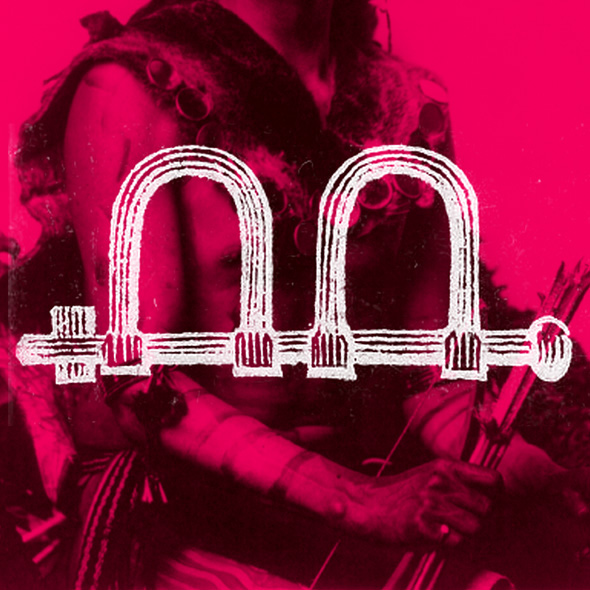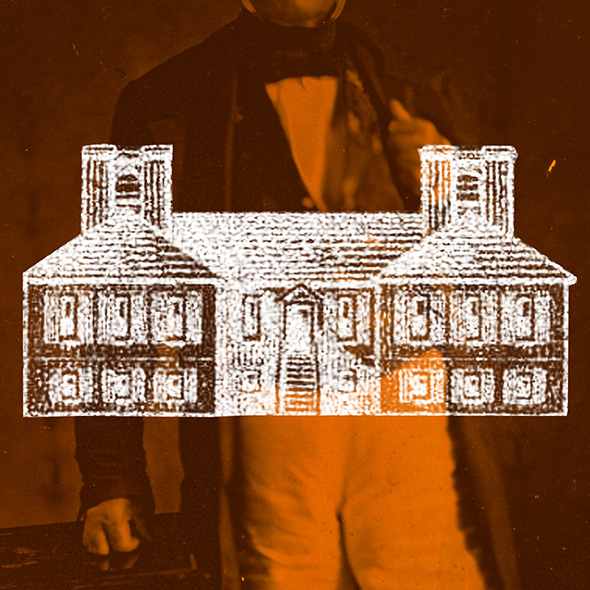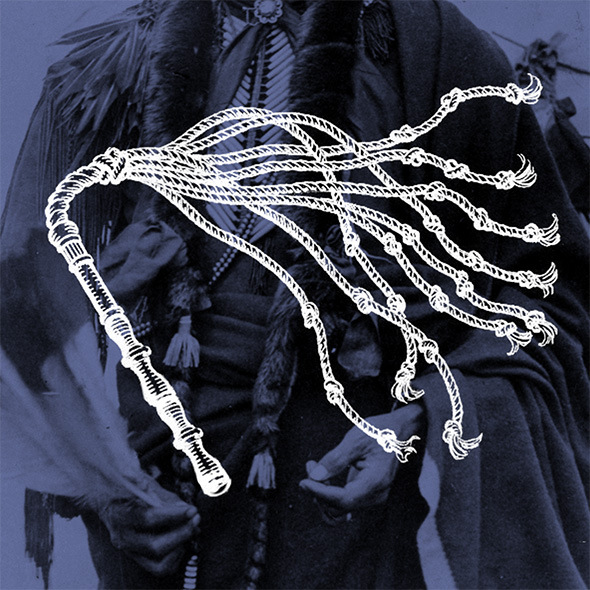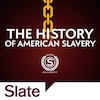America’s Other Original Sin
Europeans didn’t just displace Native Americans—they enslaved them, and encouraged tribes to participate in the slave trade, on a scale historians are only beginning to fathom.
Here are three scenes from the history of slavery in North America. In 1637, a group of Pequot Indians, men and boys, having risen up against English colonists in Connecticut and been defeated, were sold to plantations in the West Indies in exchange for African slaves, allowing the colonists to remove a resistant element from their midst. (The tribe’s women were pressed into service in white homes in New England, where domestic workers were sorely lacking.) In 1741, an 800-foot-long coffle of recently enslaved Sioux Indians, procured by a group of Cree, Assiniboine, and Monsoni warriors, arrived in Montreal, ready for sale to French colonists hungry for domestic and agricultural labor. And in 1837, Cherokee Joseph Vann, expelled from his land in Georgia during the era of Indian removal, took at least 48 enslaved black people along with him to Indian Territory. By the 1840s, Vann was said to have owned hundreds of enslaved black laborers, as well as racehorses and a side-wheeler steamboat.
A reductive view of the American past might note two major, centuries-long historical sins: the enslavement of stolen Africans and the displacement of Native Americans. In recent years, a new wave of historians of American slavery has been directing attention to the ways these sins overlapped. The stories they have uncovered throw African slavery—still the narrative that dominates our national memory—into a different light, revealing that the seeds of that system were sown in earlier attempts to exploit Native labor. The record of Native enslavement also shows how the white desire to put workers in bondage intensified the chaos of contact, disrupting intertribal politics and creating uncertainty and instability among people already struggling to adapt to a radically new balance of power.
Before looking at the way Native enslavement happened on the local level (really the only way to approach a history this fragmented and various), it helps to appreciate the sweep of the phenomenon. How common was it for Indians to be enslaved by Euro-Americans? Counting can be difficult, because many instances of Native enslavement in the Colonial period were illegal or ad hoc and left no paper trail. But historians have tried. A few of their estimates: Thousands of Indians were enslaved in Colonial New England, according to Margaret Ellen Newell. Alan Gallay writes that between 1670 and 1715, more Indians were exported into slavery through Charles Town (now Charleston, South Carolina) than Africans were imported. Brett Rushforth recently attempted a tally of the total numbers of enslaved, and he told me that he thinks 2 million to 4 million indigenous people in the Americas, North and South, may have been enslaved over the centuries that the practice prevailed—a much larger number than had previously been thought. “It’s not on the level of the African slave trade,” which brought 10 million people to the Americas, but the earliest history of the European colonies in the Americas is marked by Native bondage. “If you go up to about 1680 or 1690 there still, by that period, had been more enslaved Indians than enslaved Africans in the Americas.
Between 1670 and 1715, more Indians were exported into slavery through Charles Town than Africans were imported.
The practice dates back to the earliest history of the European colonies in the future United States. Take the example of the Pequot who were enslaved in 1637 after clashing with the English. As Newell writes in a new book, Brethren by Nature: New England Indians, Colonists, and the Origins of American Slavery, by the time the ship Desiretransported the defeated Pequot men and boys to the Caribbean, colonists in New England, desperate for bodies and hands to supplement their own meager workforce, had spent years trying out various strategies of binding Native labor.
During the Pequot War, which was initially instigated by struggles over trade and land among the Europeans, the Pequot, and rival tribes, colonists explicitly named the procurement of captives as one of their goals. Soldiers sent groups of captured Pequot to Boston and other cities for distribution, while claiming particular captured people as their own. Soldier Israel Stoughton wrote to John Winthrop, having sent “48 or 50 women and Children” to the governor to distribute as he pleased:
Ther is one … that is the fairest and largest that I saw amongst them to whome I have given a coate to cloath her: It is my desire to have her for a servant … There is a little Squa that Stewart Calaot desireth … Lifetennant Davenport allso desireth one, to witt a tall one that hath 3 stroakes upon her stummach …
A few years after the conclusion of the war, in 1641, the colonists of Massachusetts Bay passed the first formal law regulating slavery in English America, in a section of the longer document known as the Body of Liberties. The section’s language allowed enslavement of “those lawfull Captives taken in just warres, and such strangers as willingly selle themselves or are sold to us,” and left room for legal bondage of others the authorities might deem enslaved in the future. The Body of Liberties codified the colonists’ possession of Native workers and opened the door for the expansion of African enslavement.
* * *
Europeans did not introduce slavery to this continent. Many, though not all, of the Native groups in the land that later became the United States and Canada practiced slavery before Europeans arrived. Native tribes, in their diversity, did not have a uniform approach to enslavement (given Americans’ propensity to collapse all Native people together, this bears reiterating). Many of those traditions also changed when tribes began to contend with the European presence. “There are many slaveries, and colonialism brings different slaveries into contact with one another,” historian Christina Snyder, who wrote a history of Native slavery in the Southeast, told me. Contact pushed Native practices to change over time, as tribes contested, or adapted to, European demands. But, broadly speaking, Native types of enslavement were often about kinship, reproductive labor, and diplomacy, rather than solely the extraction of agricultural or domestic labor. The difference between these slaveries and European bondage of Africans was great.
Historian Pekka Hämäläinen, in his 2009 book The Comanche Empire, writes of Comanche uses of slavery during their period of dominance of the American Southwest between 1750 and 1850. The Comanche exercised hegemony in part by numerical superiority, and enslavement was part of that strategy. Hämäläinen writes that Comanches put captives through a rigorous process of enslavement—a dehumanizing initiation that brought a non-Comanche captive into the tribe through renaming, tattooing, beating, whipping, mutilation, and starvation—but stipulates that once a person was enslaved, there were varying degrees of freedom and privilege she or he could attain. Male captives might be made blood bondsmen with their owners, protecting them from ill treatment and casual sale; women might be married into the tribe, after which time they became, as Hämäläinen puts it, “full-fledged tribal members”; younger, more impressionable children might be adopted outright. After a period of trauma, captives could, quite possibly, attain quasi-free status; their own children would be Comanches.

Photo illustration by Lisa Larson-Walker. Photos via Library of Congress & Wikimedia Commons.
In his book Bonds of Alliance: Indigenous and Atlantic Slaveries in New France, Brett Rushforth writes about a similar tradition of “natal alienation” practiced by enslaving tribes in the Pays d’en Haut (the French name for the Great Lakes region and the land west of Montreal) in order to strip a captive of his or her old identity and life. Rushforth does not sell short the awfulness of these processes; still, he pointed out: “Rather than a closed slave system designed to move slaves ‘up and out’—excluding slaves and their descendants from full participation in their masters’ society, even when freed—indigenous slavery moved captives ‘up and in’ toward full, if forced, assimilation.” This was more than Africans enslaved by Europeans could hope for, after the legal codification of hereditary chattel slavery in the 17th and early 18thcenturies.
Source: http://www.slate.com/articles/news_and_politics/cover_story/2016/01/native_american_slavery_historians_uncover_a_chilling_chapter_in_u_s_history.single.html
The disconnect between Native uses of slavery and European understandings of the practice often made for miscommunication. In some places, ironically enough, Native groups themselves initiated the trade in captives to the Europeans. In the Pays d’en Haut, Rushforth found in his research, Indian groups believed in “a diplomatic function of captive-taking.” Early in their time in the area, French officials found themselves offered Native slaves as tokens of trust, peace, and friendship. “When the French embedded themselves in these Native systems of alliance and trade and diplomacy, they found themselves engaged in these captive exchanges—not unwillingly, of course,” Rushforth told me. “At the same time, the French were trading African slaves in the Caribbean and South America, so it’s not like the Indians forced this upon the French. The French found the diplomatic function of it to be kind of confusing. They didn’t know what to make of it at first, and then they sort of manipulated it to their own advantage.”
Rushforth notes that the political equilibrium that prevailed before the arrival of Europeans had kept the Native slave trade minimal. “If you’re a Native group in the Midwest and it’s hunting season, you have to make a choice,” he said. “ ‘Are we going to go after an enemy, or are we going to stock up on meat and hides and other things?’ It’s either hunting or captive-raiding. And so that created these disincentives to go after captives, because there were all kinds of reasons you wanted to have peace, all kinds of reasons you wanted to have your economy running.”
Soon, however, French officials, desiring more slaves, began to incentivize Native people to take captives by promising desirable goods in return. Nearby tribes began to raid one another in earnest, often venturing far into the interior of the present-day United States to grab Pawnee and other Plains Indians. With French traders now offering goods and comestibles in exchange for captives, the old political balance was disrupted. “If you can go raid your enemies and trade them, for food and cloth and other things, you can actually sort of collapse those two choices into one,” Rushforth said. “That means the choice to raid for captives was much less costly for them. And so they actually did it much more often.” The French, wanting to be secure from violence in Montreal, made rules that pushed the chaos of raiding farther away—circumscribing the sale of Native slaves from nearby tribes, for example. “So they can create all of this extractive force,” Rushforth noted, “and it just makes everything chaotic and destructive out there.”
As in the Pays d’en Haut, so in the American South, where the demand for Indian slaves changed the political relationships between tribes. “Once Europeans showed up and they demanded that the supply of Native slaves amp up to meet the demand, Native practices regarding slaves changed,” Snyder said. “So people who might once have been adopted or killed now became slaves.”
Captives experienced enslavement by 17th-century Europeans in a much different way than enslavement by another Indian tribe. If a Native person was made captive by a rival tribe, a set of relatively predictable traditions governed his or her treatment. But after a Native captor sold a captive to a European, the person was swept into a global system. She, or he, was now a commodity. In the South, Snyder said, “[Natives] basically became slaves in a really similar way to African slaves, who were also arriving at the same time in South Carolina.” Reduced to a source of labor, and caught up in a wide-reaching web of exchange, the Native slave could be sold very far away. Rushforth points to instances of Apaches and other Plains peoples being sold, through Quebec, to the Caribbean. “There were Plains Apaches who showed up on sugar plantations in Martinique,” he said.
While the histories of Native enslavement and enslaving might seem to be separate spheres of study, they too are intertwined. Tribal groups could find themselves shifting from enslavers to enslaved, as their relationships to Euro-Americans, and with other tribes, changed over time. To illustrate this concept, Snyder points to the story of the Westo Indians, a group originally from around Lake Erie, who spoke an Iroquoian language. They left the North in the middle of the 17th century, Snyder says, “probably because of Iroquois competition over guns and slaving,” and moved to the Southeast, where they enslaved local Indians for sale to colonists. “But then the colonists got anxious, or they were afraid that this group was too powerful,” Snyder said; in 1680, a group of Carolinians armed the Savannah Indians and empowered them to break the Westos’ strength in the area. The remaining Westos were, themselves, sold to the Caribbean as slaves.
* * *
In the late-18th-century Southeast, the Native relationship to slavery took a surprising turn. There, a relatively small group of Cherokees, Creeks, Choctaws, and Chickasaws held Africans in bondage. Historian Tiya Miles has written two histories of Cherokee slaveholding. Miles places the number of enslaved people held by Cherokees at around 600 at the start of the 19th century and around 1,500 at the time of westward removal in 1838-9. (Creeks, Choctaws, and Chickasaws, she said, held around 3,500 slaves, across the three nations, as the 19th century began.) “Slavery inched its way slowly into Cherokee life,” Miles told me. “When a white man moved into a Native location, usually to work as a trader or as an Indian agent, he would own [African] slaves.” If such a person also had a child with a Native woman, as was not uncommon, the half-European, half-Native child would inherit the enslaved people (and their children) under white law, as well as the right to use tribal lands under tribal law. This combination put such people in a position to expand their wealth, eventually operating large farms and plantations. This was the story of James Vann, the father of Joseph, the steamboat owner; the elder Vann’s mother was Cherokee, while his father was white.
In the second and third decades of the 19thcentury, the Cherokee strategy to keep the American government from taking their land was to prove their own sovereignty as a “civilized” people. They were trying, Miles said, “to form a Cherokee government that looked like the U.S. government, to publish laws, establish a Supreme Court, establish a principal city, to create a police force, to create a newspaper.” These efforts were concurrent with the growth of slavery, another adopted tradition that would show that Cherokees were truly assimilating.

Photo illustration by Lisa Larson-Walker. Photos via Library of Congress & Wikimedia Commons.
The United States government—Congress considered itself in charge of Indian affairs and, starting in the 1780s, established a series of governmental structures meant to manage tribal relations—“had really clear ideas about what it meant to be civilized,” Miles said. “That included a different gendered differentiation of labor, so men were supposed to stop hunting; they were supposed to come back and farm. Women were supposed to be in the household. And enslaved people were supposed to be out in those fields, helping to produce even more crops and eventually allowing the native man to have more of a supervisory role.” Indian agents—white men appointed by Congress to liaise with the tribes—would report to their supervisors on the degree to which Cherokee slaveholders were fulfilling the expectations of white observers. Some white onlookers thought James Vann far too lenient in the way he socialized with the (by one count) 70 enslaved Africans who worked on his plantation. Still, he prospered, eventually owning 400 to 800 acres of land, a store, a tavern, and a trading post.
The material success of slaveholders such as Vann did not, in the end, save the Cherokees from removal. While some Native slaveowners in the South may have been “temporarily enriched” by slaveholding, historian Claudio Saunt argues, “as the demand for captives rose, it destabilized the entire region. The dehumanization of non-Europeans ultimately allowed white colonists to justify the killing of Southeastern Indians and the appropriation of their lands.” The explicitly racist underpinnings of slavery in the South left Native people there, even slaveholders who participated in the system, vulnerable. When white demand for land prevailed, the Native population would inevitably lose.
During removal, some wealthy Cherokees were able to take their enslaved people along. Many walked the Trail of Tears, along with the Natives who held them in bondage. “If you were rich in the Southeast, you got to basically start over again with a captive labor force,” Miles said. “Which doesn’t mean that removal wasn’t awful; it was still awful. But it meant that you had a leg up in rebuilding your wealth.”
Slave narratives—there are Works Progress Administration oral histories given by black slaves who were once owned by Cherokees and other tribes—report favorably on the experience of being held by Natives. Miles told me that she thought the historian should take these narratives with a grain of salt, pointing out that there are also many stories of Native slaveholders selling or punishing their black bondsmen. “There were more ways to have a margin of autonomy in Native American contexts. There are examples of Native people freeing their slaves and marrying them,” she said. “But at the same time there are many instances of very violent behavior that tended to take place on the larger plantations. … So it depended on where you were enslaved and who you were enslaved by.” Some Native people who held Africans on small farms, where they might “eat out of the same pot as the master” (as Miles put it), treated them as a kind of family. In her first book, however, Miles wrote about a Cherokee farmer who enslaved an African woman, lived with her for decades, and never freed her, despite her bearing his children. In that particular case, years of intimacy did not lead to emancipation.
* * *
The historians I spoke with said that they found this history challenging to talk about in moral terms—perhaps more so than the history of African slavery. “I think popular history likes to talk about good guys and bad guys,” Snyder told me. The complexities of the history of Native enslavement leave such clear distinctions behind. “Some may think that I do not philosophize enough,” Alan Gallay writes in the introduction to his book, “that I have the responsibility of always separating good from evil, of creating a parable from which the moral of the story may easily be drawn. I wish that it were so simple.”
The fact that Native people so often assisted in the enslavement of people from other tribes makes this story a complicated one. Yes, Europeans did have Native assistance in implementing their ends; they were also the ones who put Native tribes under the existential pressures that forced many Indians to sell fellow Natives into slavery. This tragedy does not make for so clear-cut a narrative as, say, the bravery of the fugitive African Americans who took the Underground Railroad to freedom. Yet it is a tragedy nonetheless.
The many stories of Native slavery force us to think about the strategies Native people used to respond to the relentless European desire for labor. Some, like the Yamasee—who, with their allies, rose up to challenge British colonists in South Carolina in 1715-16—fought enslavement with violent resistance. Some, like the warriors who brought the long coffle of Sioux to Montreal in 1741, or the Cherokee, Creek, Chickasaw, and Choctaw who took their African slaves to Indian Country in the 1830s, tried to adapt by becoming part of the system.
Later, some worked within European law to challenge a tradition of Indian enslavement. In 1739, a Native man known only as “Caesar” sued for his own freedom in New London, Connecticut. He argued that his mother, Betty, who had surrendered during King Philip’s War in 1676, should have been set free after 10 years of servitude, rather than enslaved, and that he himself should have been born a free man. More than a few second- and third-generation Native slaves brought such cases in New England in the 1730s and 1740s, and in so doing, writes Margaret Ellen Newell, they fueled New England’s growing abolitionism, forcing men in power to reconsider the legal basis for enslavement. Natives were thus part of the history of American slavery at its beginning, and at its end.
* * *
Further Reading
New England:
Margaret Ellen Newell: Brethren by Nature: New England Indians, Colonists, and the Origins of American Slavery
The Southwest:
Pekka Hämäläinen, The Comanche Empire
The Midwest:
Carl J. Ekberg: Stealing Indian Women: Native Slavery in the Illinois Country
The Great Lakes:
Brett Rushforth: Bonds of Alliance: Indigenous and Atlantic Slaveries in New France
The Pacific Northwest:
Leland Donald: Aboriginal Slavery on the Northwest Coast of North America
Robert H. Ruby and John A. Brown, Indian Slavery in the Pacific Northwest
Indian Territory:
Fay Yarbrough, Race and the Cherokee Nation
Gary Zellar, African Creeks: Estelvste and the Creek Nation
The Southeast:
Robbie Ethridge and Sheri M. Shuck-Hall, eds, Mapping the Mississippian Shatter Zone: The Colonial Indian Slave Trade and Regional Instability in the American South
Alan Gallay, ed., Indian Slavery in Colonial America



No comments:
Post a Comment